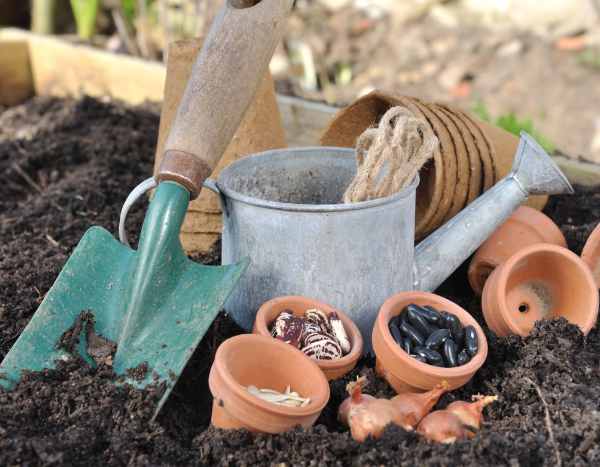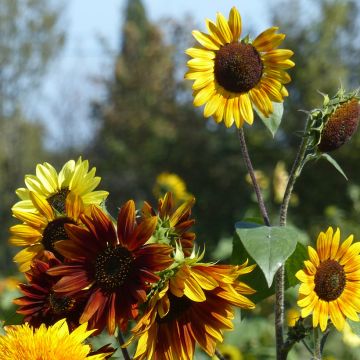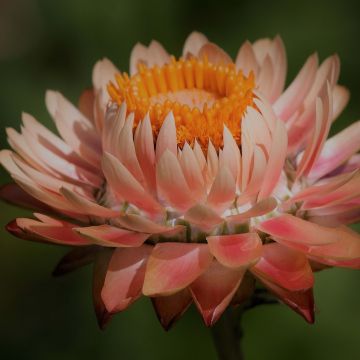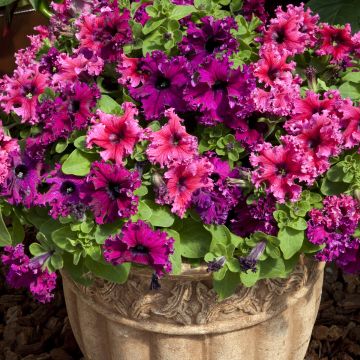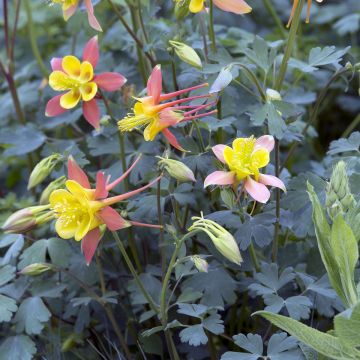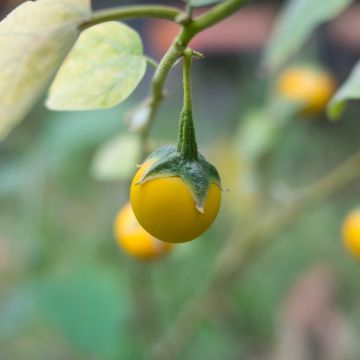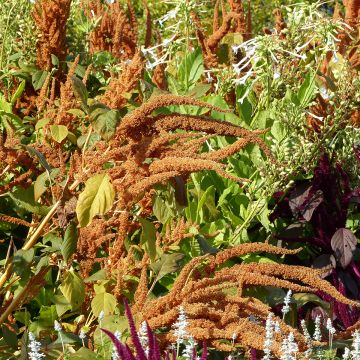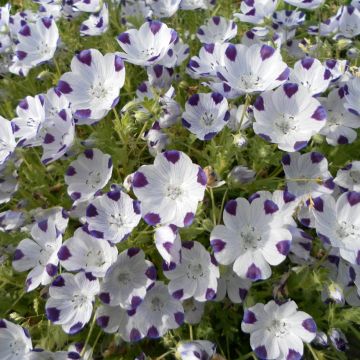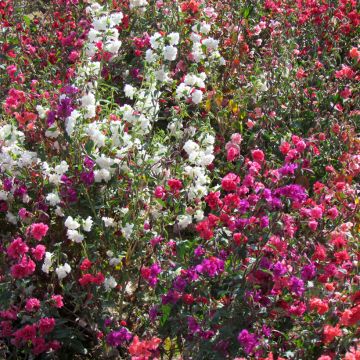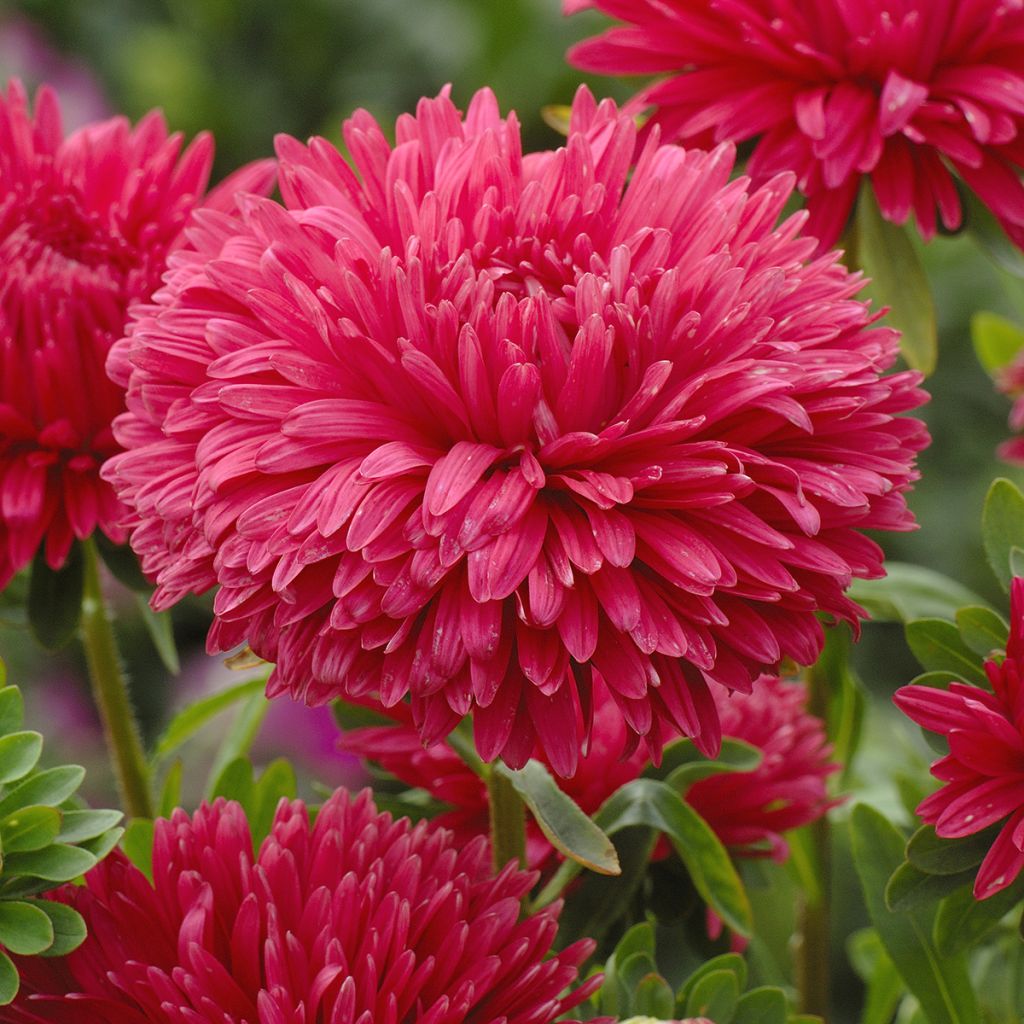

Callistephus chinensis King Size Red - Aster de Chine King Size Red
Callistephus chinensis King Size Red - Aster de Chine King Size Red
Callistephus chinensis King Size Red
Aster de Chine King Size Red
Special offer!
Receive a €20 voucher for any order over €90 (excluding delivery costs, credit notes, and plastic-free options)!
1- Add your favorite plants to your cart.
2- Once you have reached €90, confirm your order (you can even choose the delivery date!).
3- As soon as your order is shipped, you will receive an email containing your voucher code, valid for 3 months (90 days).
Your voucher is unique and can only be used once, for any order with a minimum value of €20, excluding delivery costs.
Can be combined with other current offers, non-divisible and non-refundable.
Home or relay delivery (depending on size and destination)
Schedule delivery date,
and select date in basket
This plant carries a 6 months recovery warranty
More information
We guarantee the quality of our plants for a full growing cycle, and will replace at our expense any plant that fails to recover under normal climatic and planting conditions.
Would this plant suit my garden?
Set up your Plantfit profile →
Description
The China Aster 'King Size Red' (Callistephus chinensis) is a very beautiful variety of China aster that captivates with its large, bright red double flowers and long, sturdy stems. Vigorous and floriferous, this annual plant brings fantastic colour to flowerbeds and creates rich cut flower arrangements. Easy to grow in fertile soil and full sun, it flowers from summer until autumn.
The China Aster King Size Red belongs to the Asteraceae family. The wild species, Callistephus chinensis, is also known by the botanical name Aster chinensis. Native to China, this flower is found wild in meadows, forest borders, and open areas of the northern and eastern provinces. Its natural range extends to the temperate regions of East Asia. The King Size series is the result of a Dutch horticultural programme focused on producing high-quality cut flowers. These cultivars were developed to offer large flowers, prolonged flowering, increased disease resistance, and varied colours.
The 'King Size Red' is a selected cultivar for its large, bright red double flowers measuring up to 8 cm in diameter, borne on robust stems reaching 90 cm to 1 m in height. The plant has an upright habit and dense branching. The flowers appear from August to October, more or less early depending on the sowing date. The flower heads are formed of slightly recurved, intense red petals or ligules, revealing a small yellow central disc. Pollination is carried out by bees and other pollinating insects. The foliage consists of ovate, medium green leaves with serrated edges measuring about 5 to 10 cm long. The stems are erect, sturdy, green sometimes tinged with red.
The Callistephus chinensis 'King Size Red' follows an annual cycle: the plant germinates in spring, flowers in summer, and dies in autumn after producing its seeds.
The popularity of the China Aster as a cut flower dates back several centuries in China where it was cultivated to adorn imperial gardens and used in traditional floral arrangements.
The China Aster 'King Size Red' captivates with the abundance of its flowering and its excellent performance both in beds and in vases. Sow China asters; they have few rivals for their generous flowering and timeless charm. These plants form superb colourful clumps in summer beds and flower relentlessly if care is taken to remove spent flowers. The tall varieties of the 'King Size' series blend ideally with one other. Pair 'King Size Red' with the China Aster 'Matsumoto', with Zinnia elegans 'Purple Prince' or with Mealy Cup Sage 'Victoria Blue' for spectacular contrasts. And to enjoy dazzling cut flowers until autumn, remember to sow a few rows in the vegetable garden!
Report an error about the product description
Callistephus chinensis King Size Red - Aster de Chine King Size Red in pictures
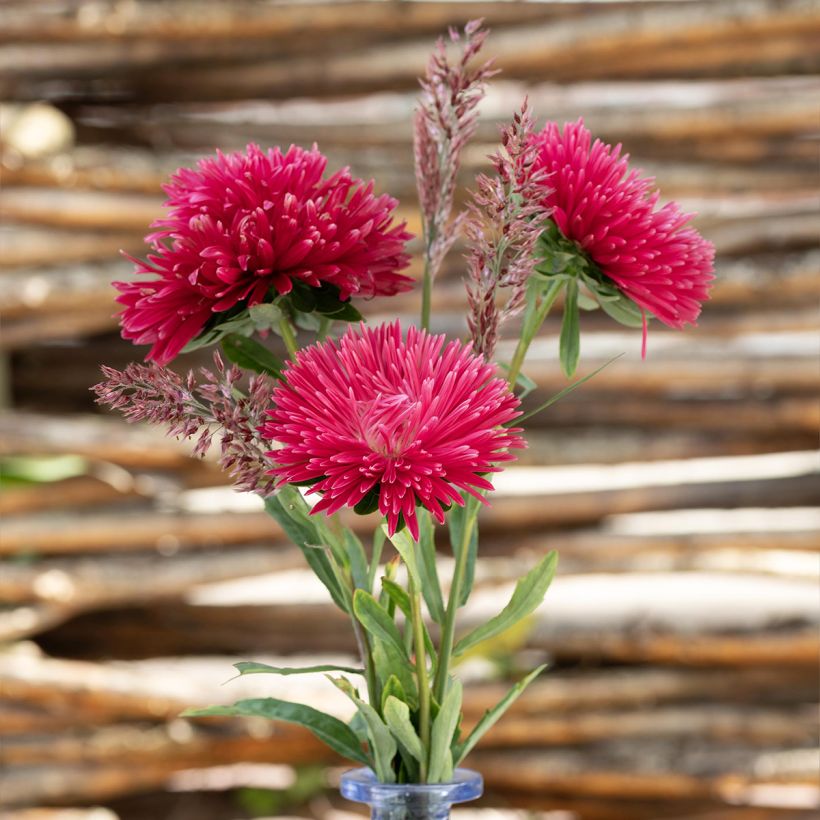

Flowering
Foliage
Plant habit
Botanical data
Callistephus
chinensis
King Size Red
Asteraceae
Aster de Chine King Size Red
Aster chinensis, Callistemma chinense, Callistemma hortense, Callistephus hortensis
Cultivar or hybrid
Planting and care
Sowing King Size Red Marguerite Daisies:
Never sow these plants in the same location for two consecutive years. Sow outdoors from April to May, then transplant once the young plants have 2 to 4 leaves, spacing them 40 cm apart in well-worked, cool, and well-manured soil, choosing a sunny spot. Water frequently but sparingly. It is beneficial to transplant several times while keeping the root ball intact to encourage root development and slightly restrain stem growth, which might otherwise break under the weight of the flowers.
For earlier flowering, sow under a cold frame or in seed trays from February to April. Sow Marguerite Daisies in trays filled with sand and light compost in a sheltered location at a temperature of 16 to 20 °C. Transplant into individual small pots when the seedlings have at least four leaves. Plant them in the garden when they reach a height of 15 cm. Use stakes to support the taller varieties with heavy double flowers. A later sowing in June will allow for staggered flowering until late autumn. The sowing can then be done directly in the garden.
Growing:
These plants prefer a neutral or slightly alkaline, fertile, and well-drained soil, and require a sunny position. Water generously twice a week during dry periods, but take care to water the base and not the foliage as Marguerite Daisies are susceptible to powdery mildew. Remember to remove faded flowers regularly to prolong flowering and prevent weakening of the plant.
Sowing period
Intended location
Planting & care advice
This item has not been reviewed yet - be the first to leave a review about it.
Similar products
Haven't found what you were looking for?
Hardiness is the lowest winter temperature a plant can endure without suffering serious damage or even dying. However, hardiness is affected by location (a sheltered area, such as a patio), protection (winter cover) and soil type (hardiness is improved by well-drained soil).

Photo Sharing Terms & Conditions
In order to encourage gardeners to interact and share their experiences, Promesse de fleurs offers various media enabling content to be uploaded onto its Site - in particular via the ‘Photo sharing’ module.
The User agrees to refrain from:
- Posting any content that is illegal, prejudicial, insulting, racist, inciteful to hatred, revisionist, contrary to public decency, that infringes on privacy or on the privacy rights of third parties, in particular the publicity rights of persons and goods, intellectual property rights, or the right to privacy.
- Submitting content on behalf of a third party;
- Impersonate the identity of a third party and/or publish any personal information about a third party;
In general, the User undertakes to refrain from any unethical behaviour.
All Content (in particular text, comments, files, images, photos, videos, creative works, etc.), which may be subject to property or intellectual property rights, image or other private rights, shall remain the property of the User, subject to the limited rights granted by the terms of the licence granted by Promesse de fleurs as stated below. Users are at liberty to publish or not to publish such Content on the Site, notably via the ‘Photo Sharing’ facility, and accept that this Content shall be made public and freely accessible, notably on the Internet.
Users further acknowledge, undertake to have ,and guarantee that they hold all necessary rights and permissions to publish such material on the Site, in particular with regard to the legislation in force pertaining to any privacy, property, intellectual property, image, or contractual rights, or rights of any other nature. By publishing such Content on the Site, Users acknowledge accepting full liability as publishers of the Content within the meaning of the law, and grant Promesse de fleurs, free of charge, an inclusive, worldwide licence for the said Content for the entire duration of its publication, including all reproduction, representation, up/downloading, displaying, performing, transmission, and storage rights.
Users also grant permission for their name to be linked to the Content and accept that this link may not always be made available.
By engaging in posting material, Users consent to their Content becoming automatically accessible on the Internet, in particular on other sites and/or blogs and/or web pages of the Promesse de fleurs site, including in particular social pages and the Promesse de fleurs catalogue.
Users may secure the removal of entrusted content free of charge by issuing a simple request via our contact form.
The flowering period indicated on our website applies to countries and regions located in USDA zone 8 (France, the United Kingdom, Ireland, the Netherlands, etc.)
It will vary according to where you live:
- In zones 9 to 10 (Italy, Spain, Greece, etc.), flowering will occur about 2 to 4 weeks earlier.
- In zones 6 to 7 (Germany, Poland, Slovenia, and lower mountainous regions), flowering will be delayed by 2 to 3 weeks.
- In zone 5 (Central Europe, Scandinavia), blooming will be delayed by 3 to 5 weeks.
In temperate climates, pruning of spring-flowering shrubs (forsythia, spireas, etc.) should be done just after flowering.
Pruning of summer-flowering shrubs (Indian Lilac, Perovskia, etc.) can be done in winter or spring.
In cold regions as well as with frost-sensitive plants, avoid pruning too early when severe frosts may still occur.
The planting period indicated on our website applies to countries and regions located in USDA zone 8 (France, United Kingdom, Ireland, Netherlands).
It will vary according to where you live:
- In Mediterranean zones (Marseille, Madrid, Milan, etc.), autumn and winter are the best planting periods.
- In continental zones (Strasbourg, Munich, Vienna, etc.), delay planting by 2 to 3 weeks in spring and bring it forward by 2 to 4 weeks in autumn.
- In mountainous regions (the Alps, Pyrenees, Carpathians, etc.), it is best to plant in late spring (May-June) or late summer (August-September).
The harvesting period indicated on our website applies to countries and regions in USDA zone 8 (France, England, Ireland, the Netherlands).
In colder areas (Scandinavia, Poland, Austria...) fruit and vegetable harvests are likely to be delayed by 3-4 weeks.
In warmer areas (Italy, Spain, Greece, etc.), harvesting will probably take place earlier, depending on weather conditions.
The sowing periods indicated on our website apply to countries and regions within USDA Zone 8 (France, UK, Ireland, Netherlands).
In colder areas (Scandinavia, Poland, Austria...), delay any outdoor sowing by 3-4 weeks, or sow under glass.
In warmer climes (Italy, Spain, Greece, etc.), bring outdoor sowing forward by a few weeks.





































